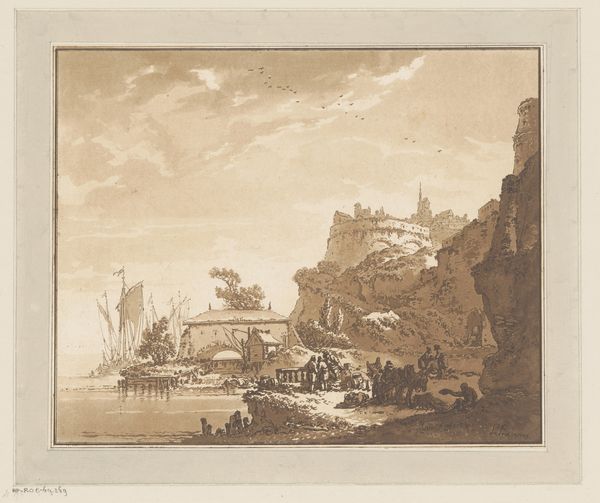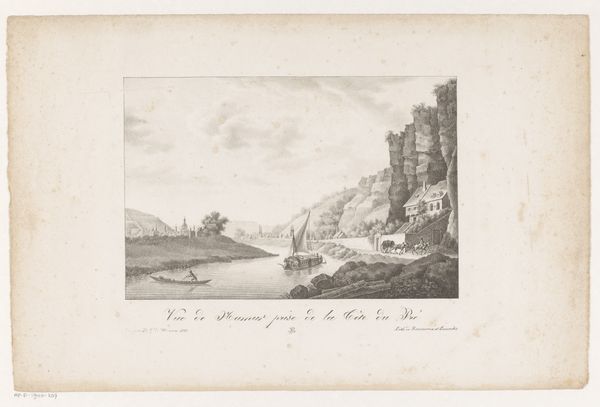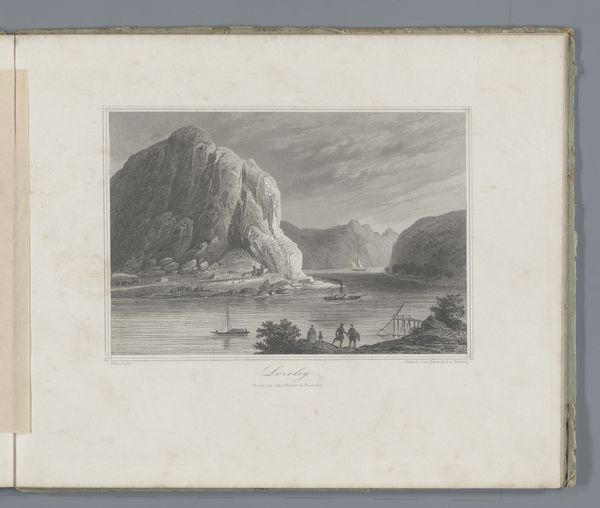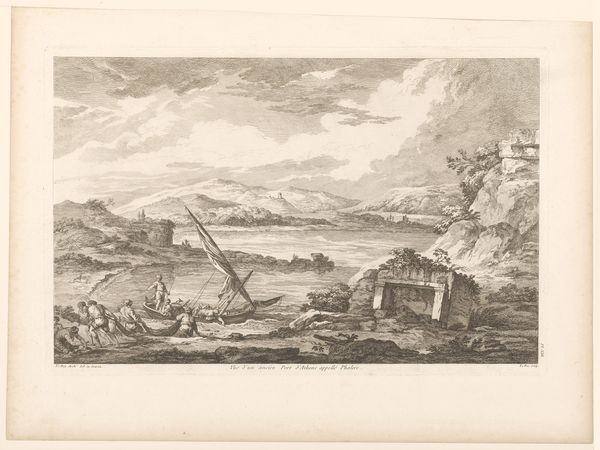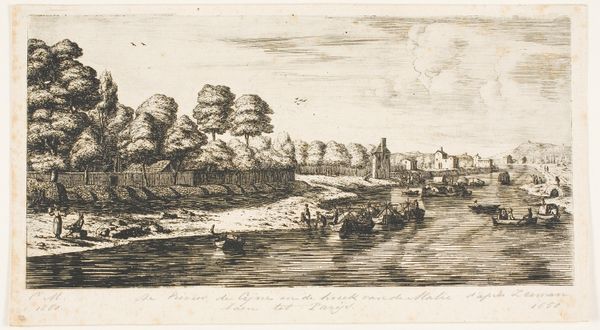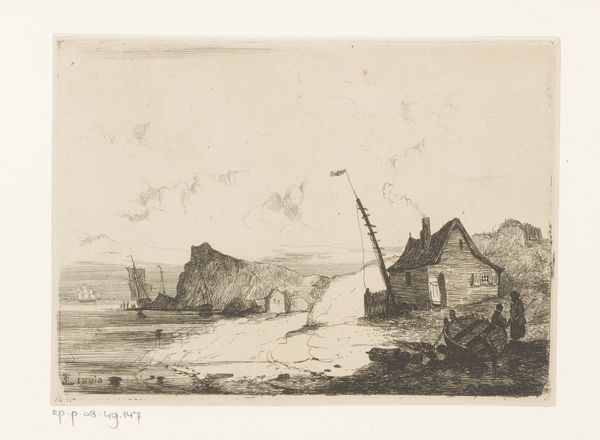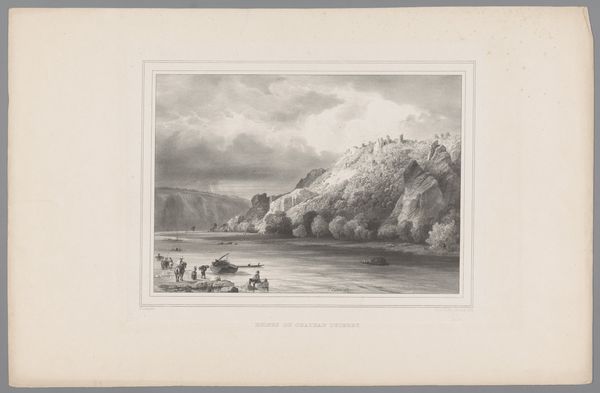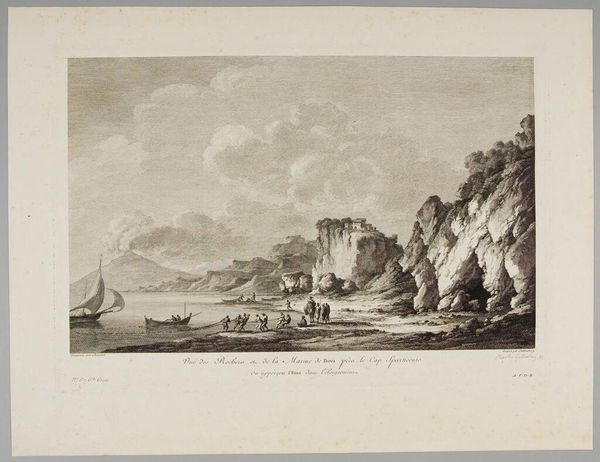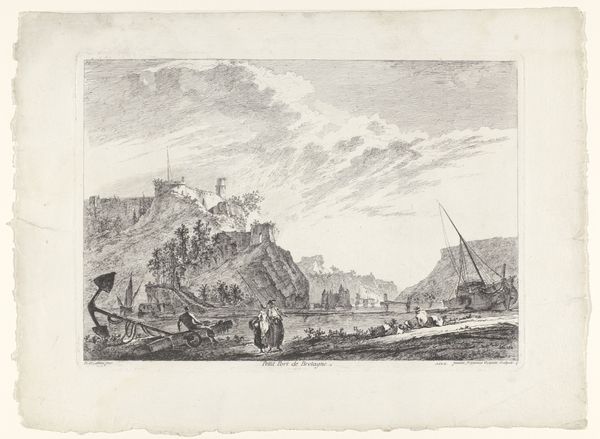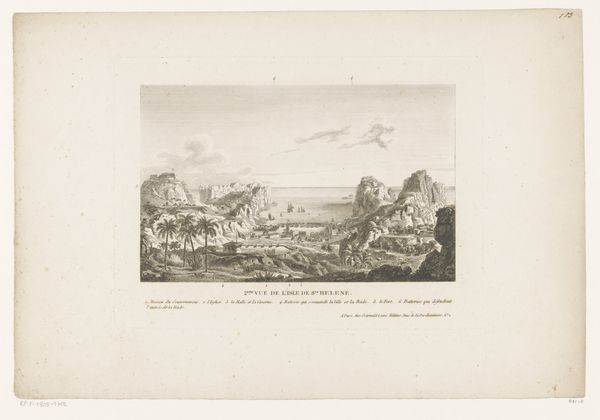
drawing, print, etching, paper, ink, pencil, engraving
#
drawing
# print
#
etching
#
pencil sketch
#
old engraving style
#
landscape
#
river
#
paper
#
ink
#
mountain
#
pencil
#
cityscape
#
engraving
Dimensions: height 225 mm, width 287 mm
Copyright: Rijks Museum: Open Domain
Curator: What a find! This etching, titled "Riverlandschap met burcht op een hoge rots" – "River Landscape with a Castle on a High Rock" – is attributed to Reinier Vinkeles. Though it's dated rather broadly, we know it comes from somewhere between 1751 and 1816. Editor: Immediately, I'm struck by the dreamy quality, like a half-remembered fairy tale illustration. The lines are so delicate, giving the whole scene a sort of nostalgic glow, almost as if you’re glimpsing into the past. It's sepia-toned and very intricate. Curator: Indeed. Consider the romantic appeal of a fortress perched atop a seemingly insurmountable peak, gazing down at the river meandering through the town below. The sheer verticality implies the fortress's strength and enduring power – a visual representation of authority and permanence. What's also interesting to me is that Reinier made both an etching and a drawing of this landscape. It’s a great example of how art, through printmaking, allowed one single scene to exist across media, thus reinforcing cultural values. Editor: That verticality is echoed in the fluffy cloud formations, so light it's like they are balancing on top of each other like some Dr. Seuss structure. I'm charmed by those little figures on the boats; tiny punctuation marks that provide this overall grand landscape some human context, making it so very relatable. This piece makes one want to get into one of those little boats. Do you think the landscape here represents idealized versions of those architectural objects like castles or rivers, reinforcing those cultural concepts you mentioned? Curator: Absolutely. The etching's inherent reproducibility contributed to circulating idealized views of both nature and architecture. Those crisp, precise lines of the etching contribute to its authority, transforming an observed landscape into a kind of definitive statement of what it represents. But one thing I appreciate the most about art of this era is that what's selected to exclude often reflects the power of human values, so, like, why not focus on the struggles of the poor, etc? Editor: Precisely. And perhaps it’s the imperfections, the artist's hand evident in the cross-hatching, that saves it from being too clinical, too much like propaganda, adding in fact, to its strange appeal. This feels like an imagined or carefully staged world rather than reality, doesn’t it? The very notion that things were more ordered and aesthetically pleasant can sometimes offer solace and make it timeless. Curator: That tension you speak of between the ideal and the imperfect is what keeps bringing me back to it. It's a landscape that manages to both promise security and whisper of unattainable serenity all at once. Editor: Indeed. It's a testament to the enduring human longing for something just beyond reach. A bit like that castle on the high rock, perhaps.
Comments
No comments
Be the first to comment and join the conversation on the ultimate creative platform.

